The UK Carrier Strike Group has returned to the Mediterranean to take part in large-scale NATO exercises, a move officials described as a signal of allied resolve.
Following a five-month deployment in the Indo-Pacific, HMS Prince of Wales and its strike group will participate in Falcon Strike, an Italian-led air and maritime exercise involving Italian, US and Greek forces.
The drills will test joint air combat operations and reinforce NATO’s deterrence posture across southern Europe, according to the Ministry of Defence.
Defence Minister Al Carns said deployments like this one show the UK’s readiness to act decisively alongside allies. “Spending six months away from home, on the far side of the world, ready at a moment’s notice to defend your life and the lives of your fellow shipmates is a big ask for anyone,” he said. “Training alongside NATO allies and expanding our defence relations around the world is critical to keeping us secure at home and strong abroad.”
Minister for Europe Stephen Doughty said the carrier group’s operations “send a clear signal to allies and adversaries alike of our commitment to a safer, more secure region.”
HMS Prince of Wales leads the task force of around 4,000 UK personnel, returning to Europe via the Red Sea and Suez Canal after what the government called one of the UK’s most significant overseas deployments in recent years.
During this Mediterranean phase, the group will visit ports in Greece, Albania, Italy and Spain to deepen defence and industrial partnerships.
Commodore James Blackmore, Commander of the Carrier Strike Group, said it was “fantastic to be back in the Mediterranean after a hugely successful period in the Indo-Pacific.” He added that the upcoming NATO exercises would “demonstrate the warfighting readiness of the UK Carrier Strike Group.”
The deployment, covering 26,000 nautical miles and engagements with 40 nations, underscores Britain’s aim to maintain its position as a leading European contributor to NATO operations.


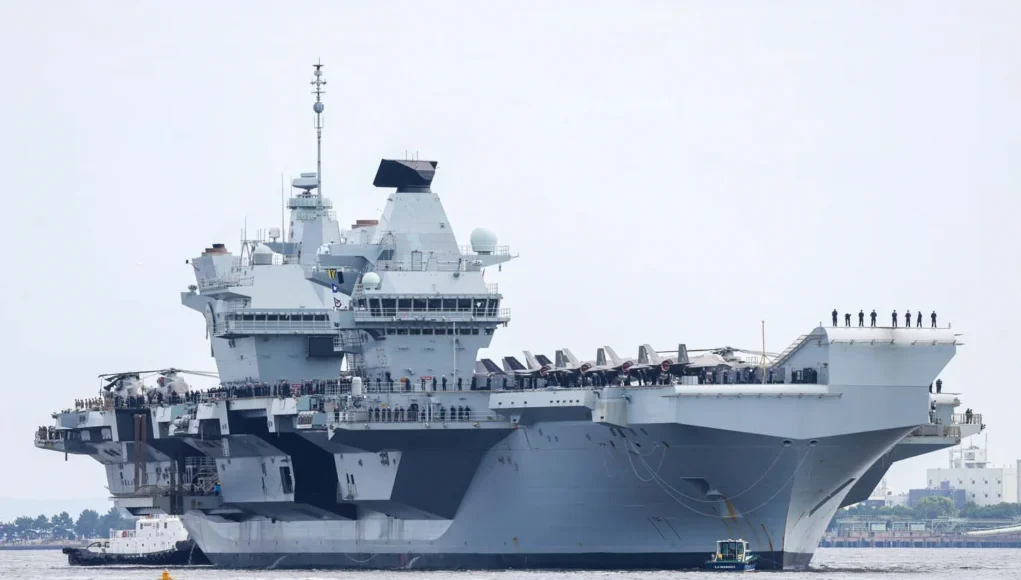

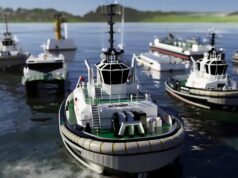


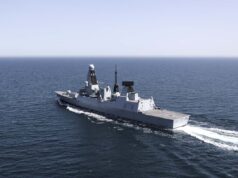

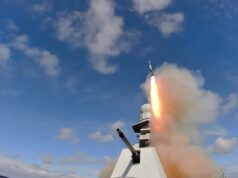
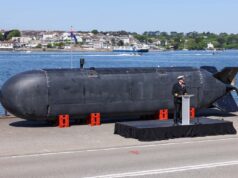
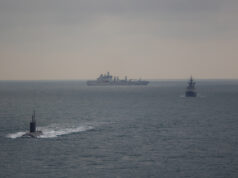
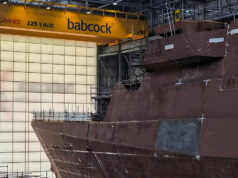

One final push – hopefully the tiredness that CSG21 suffered at the same stage has not set in. Also, have the extra six F-36B’s embarked on PoW from Akrotiri yet?
Royal Navy website has confirmed the extra jets have embarked for the exercise and POW has 24 British F35Bs on board. Finally! Will be interesting to see if any subsequent sortie data for the exercise is forthcoming. Hopefully there will be pics of the deck full of aircraft.
Reasonably certain there is a collective sense of relief in multiple capitals, not merely London, that CSG25 has returned to a NATO lake. The Canadians, Norwegians and Spanish have had crews and vessels at risk for extended periods, as well as numerous allies in the I-P, including especially the Australians and Japanese. Time to conduct a few proforma exercises on the voyage home and some defence diplomacy port visits. Basically, shepherd the CSG home and release the crews for well deserved holiday R&R. Absorb the inevitable multiple lessons learned from the deployment. Allow sufficient time for dockyard maintenance of CSG vessels before retasking. Await release of the DIP, w/ potentially favorable acquisition and capability revelations. Refurbished destroyers, multiple new frigates, and better maintained and more available SSNs (including one SSN pre-deployed to the I-P) will be features of the next CSG to the I-P. Perhaps even drone capabilities for the CV. Actually, a fair amount to be thankful for during the holiday season.
I was agreeing with you until “Await release of the DIP…”. I hope I’m wrong, but I can’t see the DIP being anything but a vague promise to do something “when funds become available”. ie never.
Presumably, one of us will be proved correct w/in the next two months. For the UK’s longer-term benefit, hope my assessment is more accurate. 🤔🤞🇬🇧😊
Careful fisheads….dont lose any in the Med. “Glug, glug”.
Fisheads?
1 Error in judgment.
1 Simple hiccup.
1 Mistake.
Could escalate this into a very bad scenario.
Be careful!
the russian’s couldn’t give a toss about the UK’s navy, except maybe for drone ship’s, the capital ships are only relevant to confronting third world country’s
Oooh they will give a shit.. a carrier with 3 squadrons of 5th generation strike aircraft in the middle of a carrier battle group is a profoundly problematic issue for Russia.. it does not have the long range maritime strike capability to remove it that would mean it would have to send its 1-2 available modern SSGNs directly into the teeth of concentrated western ASW capabilities.. and if its does that it’s going to almost certainly loss its capability… yet if it does not essentially throw its SSGNs into one big trap.. those three squadrons of 5th generation fighters will mean NATO gains air superiority in the high northern seas and occean.. with air superiority comes sea control ( surface and sub surface )… that carrier you pan so easily is the cornerstone of sea control in the high north.. why do you think Russia was so desperate to keep its own antiquated carrier going…
but they know that will never happen ?
a war in europe won’t be fought on the high seas !
No, it won’t… But the Norwegian and Finnish Troops advancing into Murmansk will appreciate the CSG in the Water that gives them 5th Gen Aircover.
It will also certainly have the Northern Fleet under further pressure. The Gerald R Ford was there keeping them busy, now they’ve another Carrier Group approaching? Really drives home to what’s left of them that their potential adversary is well equipped and has some numbers behind them.
so we agree, blathering doesn’t make something true, no matter how hard you try !
Is that ted as in defeated?
how very clever ?